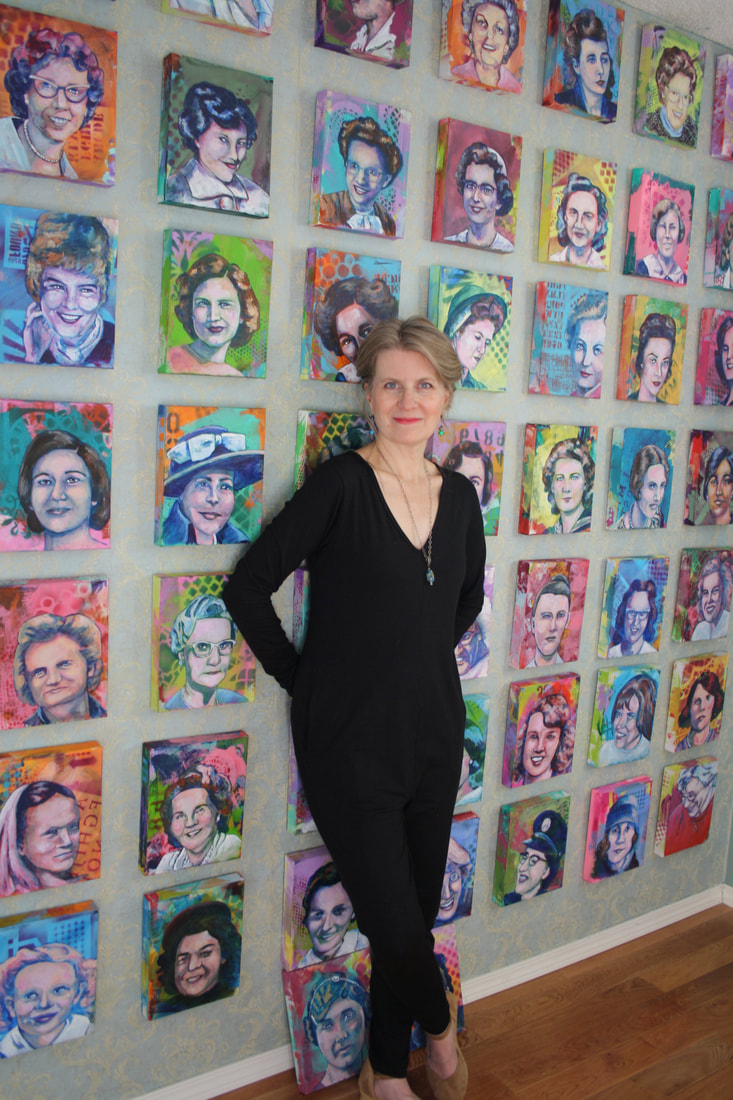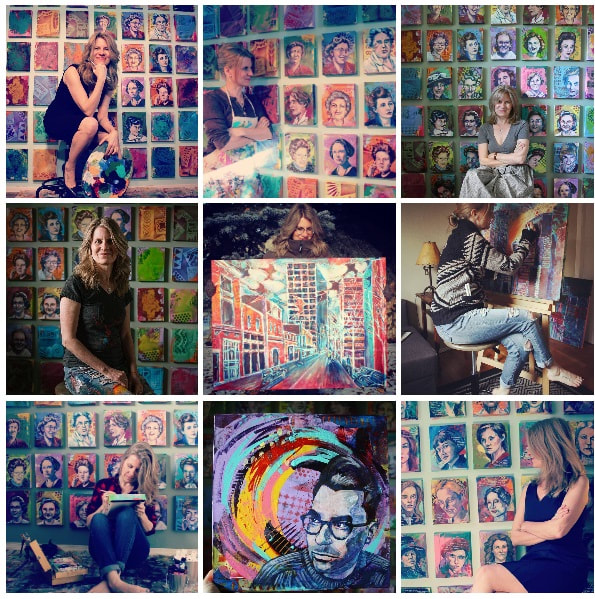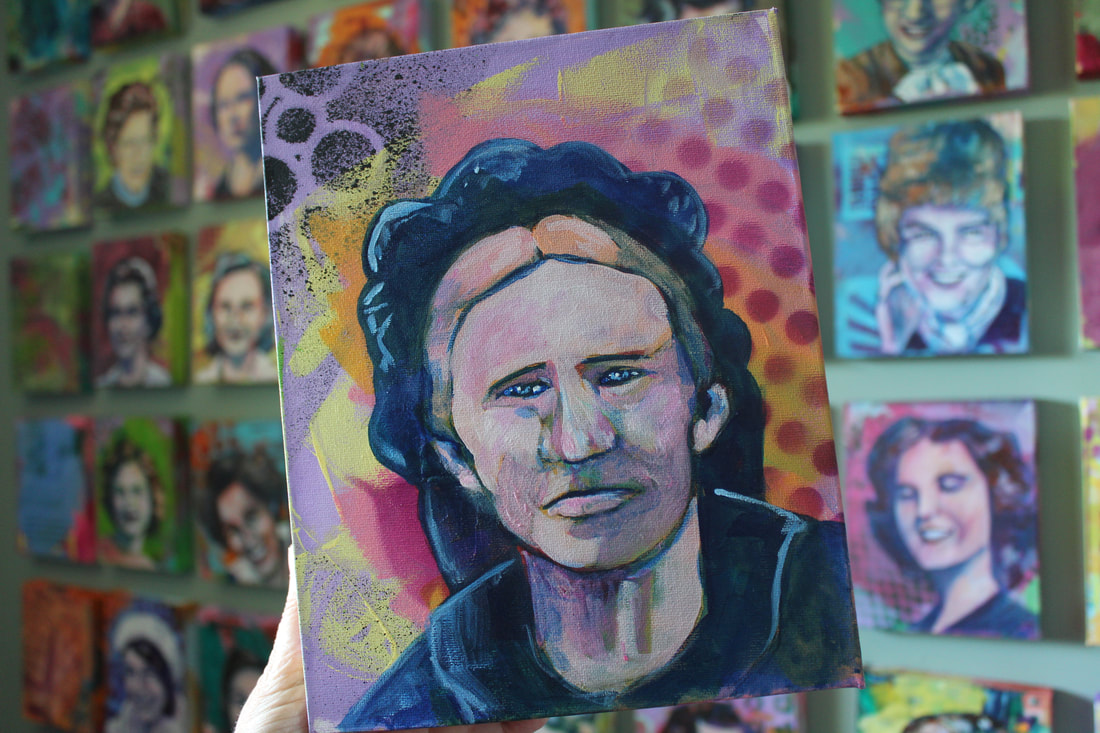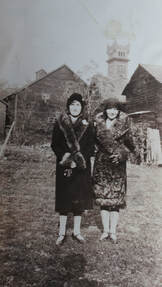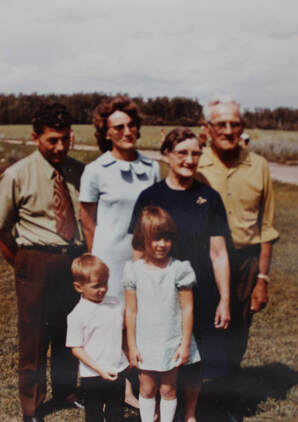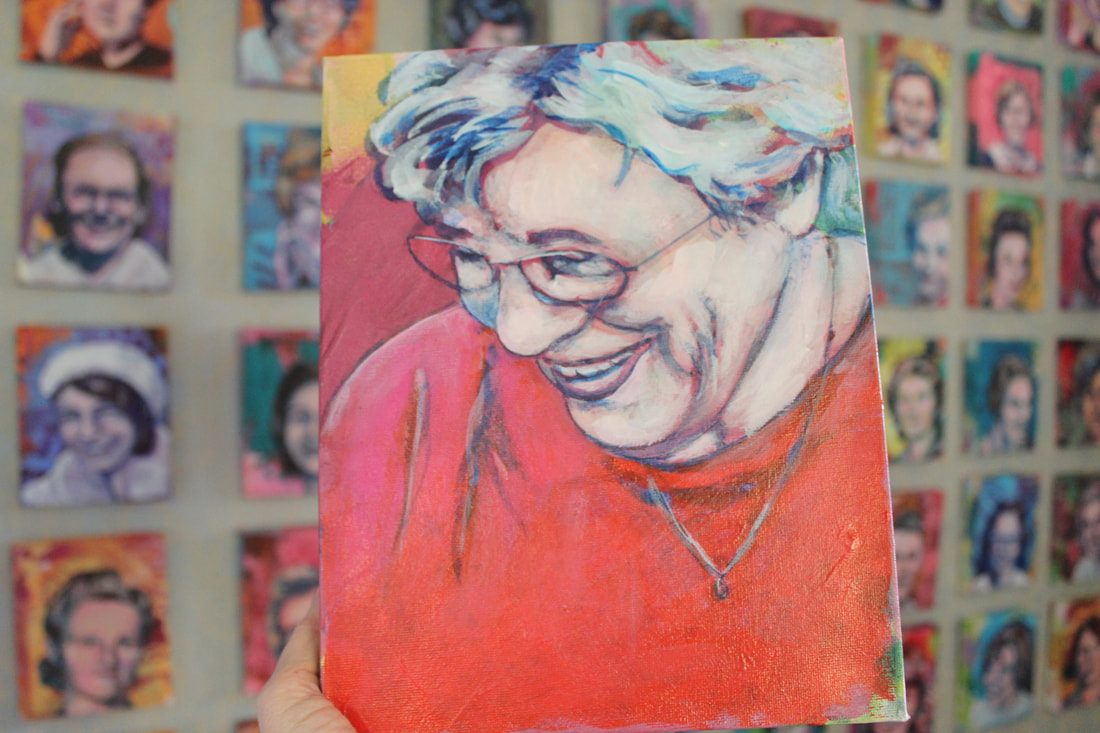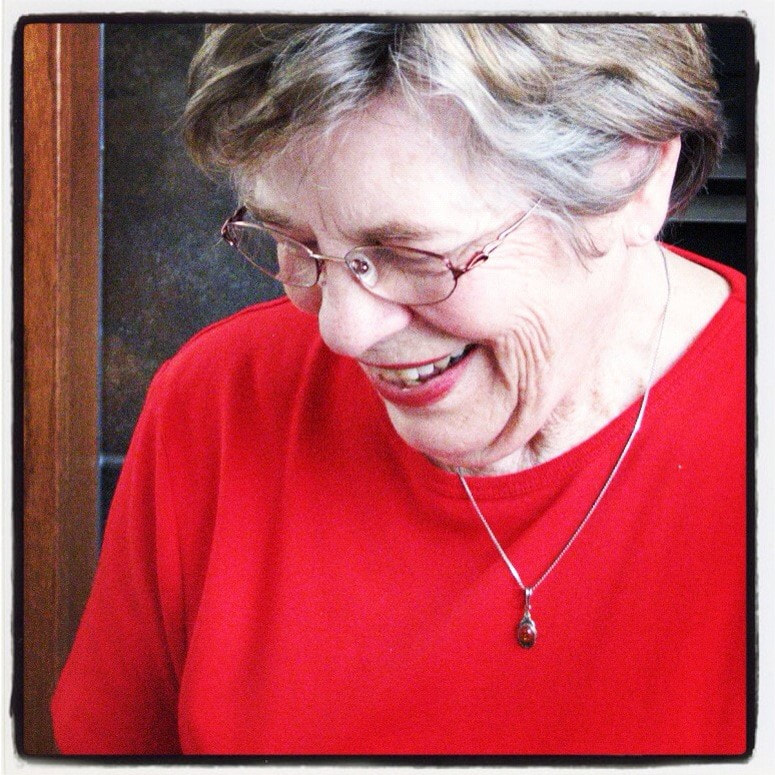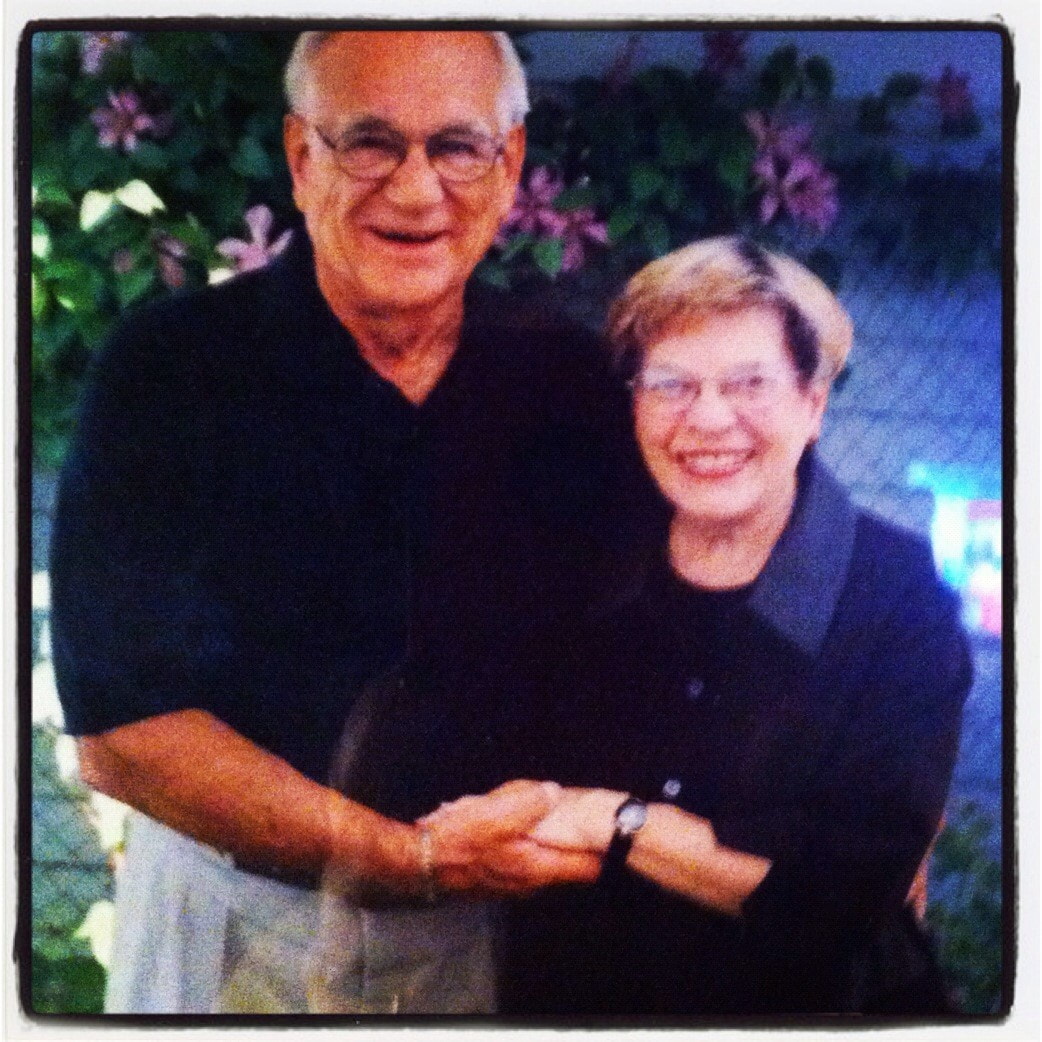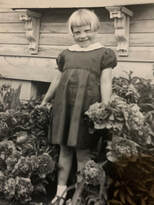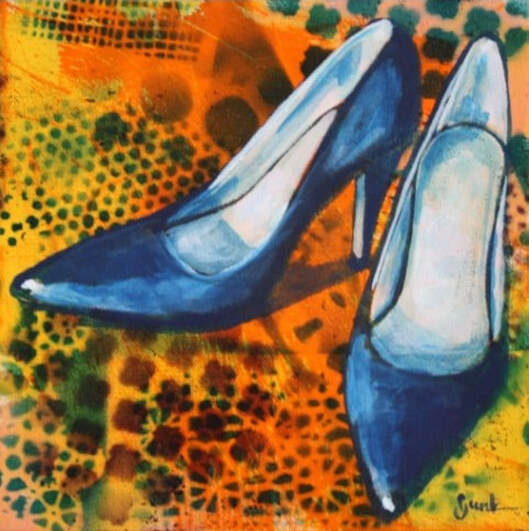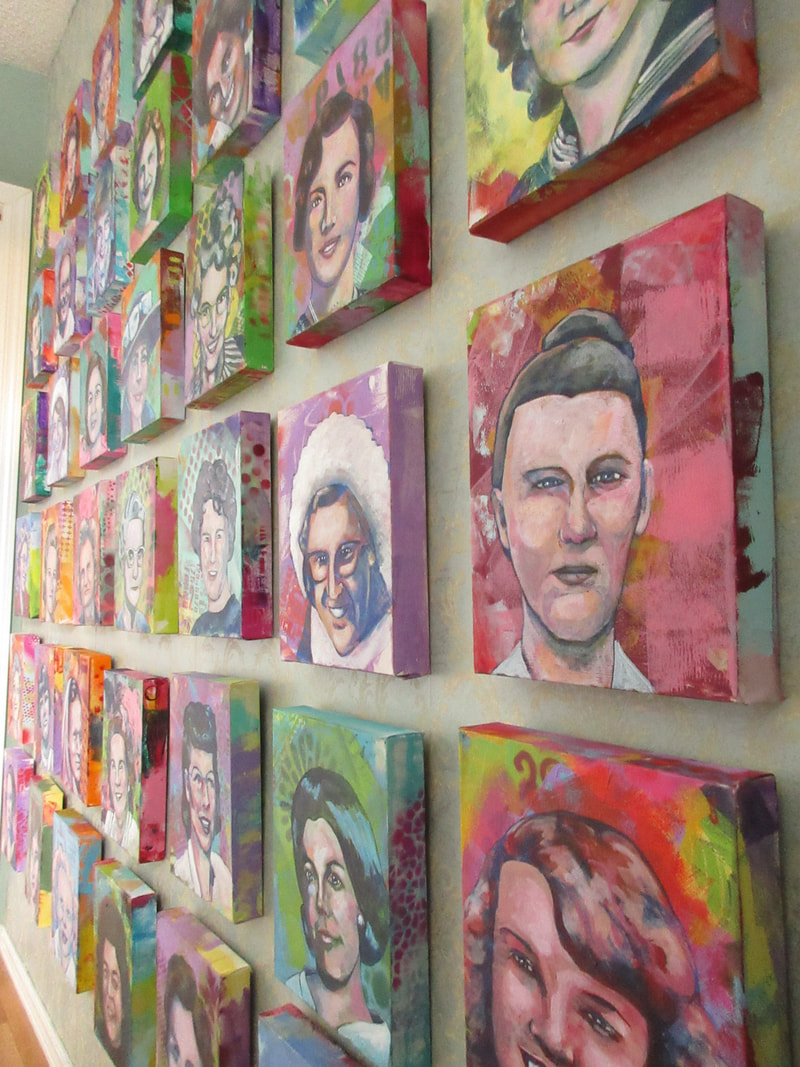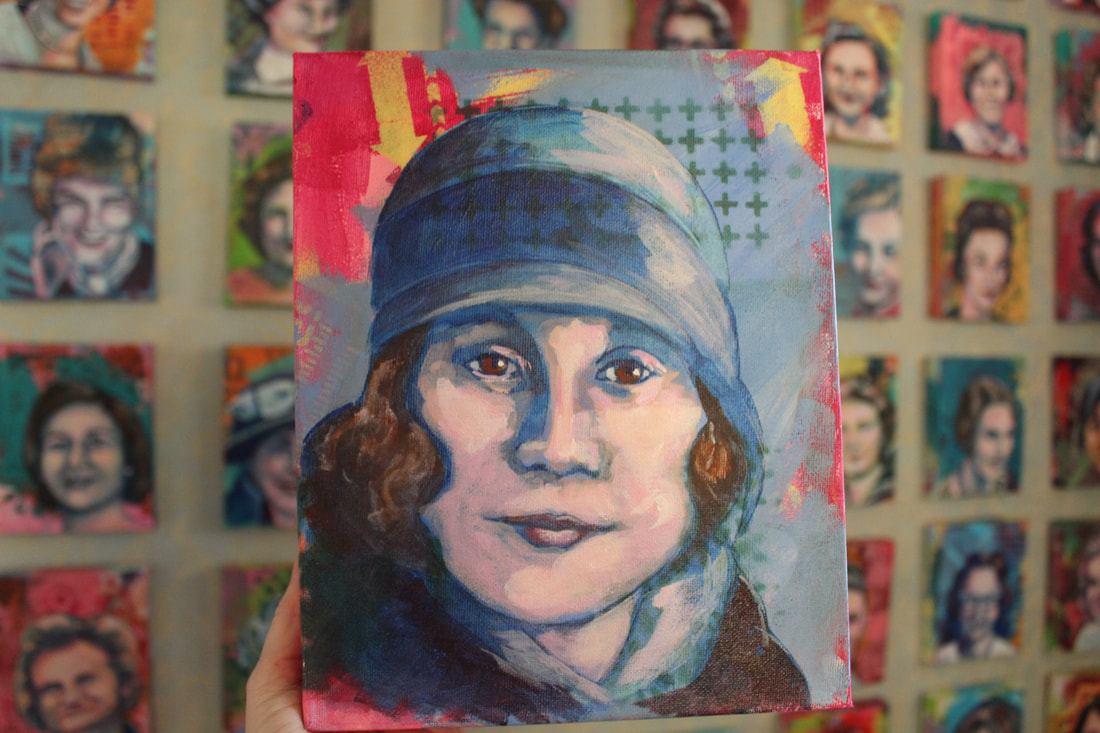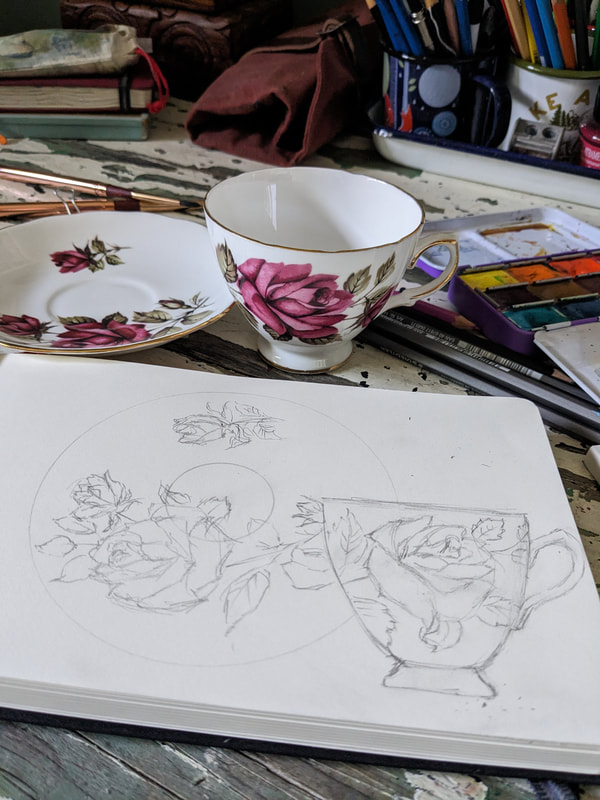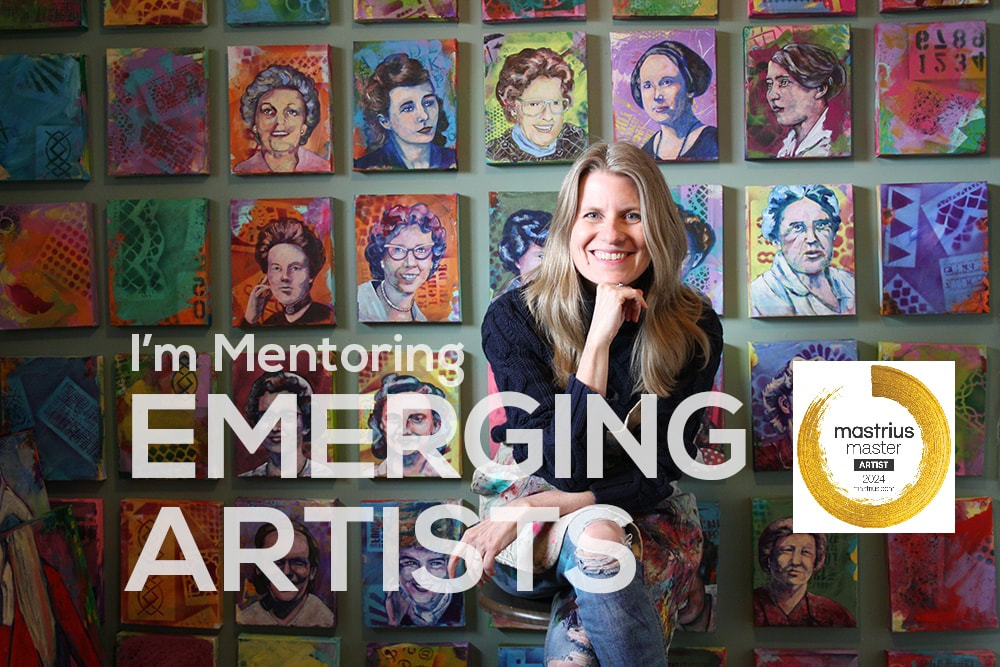|
Thank you for sharing the heart-warming stories and beautiful photographs of your grandmothers this year. I don't know what the year would have been for me if not for this project. As always, I have learned a few things:
What a year it has been! In spite of the difficulty of living through a world pandemic, there have been a few highlights. I am so grateful for my family's health, though I do miss them terribly, and I know that I need to focus on the positives right now...so here goes:
In the 1920s, my great-grandmother Gertruda (Wiens) Toews was a midwife who is still recognized at the hospital where she worked in Paraguay, South America. She was known to have delivered the healthiest babies while ensuring each mother’s safety as she always referenced a Canadian medical textbook that highly regarded cleanliness and sterilization. She boiled and ironed the aprons that she wore, boiled and disinfected scissors and other tools required during deliveries with rubbing alcohol, all while raising her own seven children.
“Midwife Gertruda Toews, born Wiens, born on January 30, 1882 in Canada, came with her husband Jacob F. Toews in the fourth emigration group to Paraguay. she was 45 years old at the time. The family first settled in Schontal, later in Osterwick, and at the age of retirement moved to Loma Plata. Seven children were born to Toews. In many years of obstetric care, she has helped many babies into the world. She assisted the women giving birth in Canada and then in the Menno Colony. It is reported that she had a doctoral degree in which she read a lot and then put that knowledge into practice. She is told that she was one of the few midwives who worked very cleanly. Before every examination and birth, she washed her hands very carefully with soap and water and disinfected them with alcohol. She had no gloves, because these were not yet available as a tool. In her work as a midwife, she always had a white apron, which she carefully washed, boiled and ironed. She also had other visitors with her, who always washed and worked carefully. Her instrumentation contained a pair of scissors and umbilical cord band, which she placed in alcohol for disinfection before use. For the women under birth, she provided a bed slider. How long she has worked and lived is not known.” ~ Obstetrics in the Menno Colony from the settlement 1927-28 (until the hospital came into existence in the late 1940s), edited by the History Committee, published by Friesen Printing, Loma Plata, Paraguay, November 2004 ~ Veronica Funk My daughter shares a name with Anna (Meyer) Blatz who was a strong young woman that emigrated from Germany after refusing an arranged marriage. Her trunk still sits in a place of honour in our home. In spite of the challenges of being separated from her sisters during WWII, she married, made a home and raised her family in the Canadian prairies.
Anna was born in 1901 in Wettmar, Lower Saxony and had three sisters, Else, Greta and Ella. When she emigrated to Canada at the age of 20, it was the last time she saw her parents and her eldest sister Ella as she never returned to Germany until 1961. She travelled via Bremerhaven, then England, on a ship with her Uncle William and Aunt Mary Meyer, landing in Hamburg, Canada on May 7, 1924. She travelled through to Winnipeg and finally arrived in Lydiatt, Manitoba where she worked for them on their farm until she had re-paid them for her trip. Her passport (Deutches Reich Resisepass) stated that her build was ‘middle’, her face ‘oval’, her hair ‘deunkel’ (dark) and that she had no earlobes. In October of the same year, her uncle gave her $5 to purchase a winter coat and brought her to Winnipeg where she worked as a cook in a rooming house for Mr. & Mrs. Abram Doerksen. This is where she met her husband, John Blatz, as he enjoyed meals at the rooming house on his delivery trips between Steinbach and Winnipeg. After marriage they purchased the boarding house where they had two children, Else and Henry, and operated the business until from 1931 to 1935. Then, renting two farms in southeastern Manitoba, they purchased one that was located 1 mile from New Bothwell, Manitoba where they lived from 1942 until 1967 where a third child, Alwin was born and died in infancy. On retirement, Anna and John moved to New Bothwell where she lived until her husband passed away, spending her remaining years in Winnipeg. During WWII she had very limited communication with her family in Germany and lost her brother-in-law near Trieste on the border of Austria and Italy. ~ Ron Funk Attached are my favourite photos of my mum. I love the one where she’s in red - she has such a lovely expression. She’s about 75 in this photo. The other was from my parents’ 50 anniversary in 2003. She was 70. They both passed away in 2012, four months apart.
My preference is the first photo, even though can’t see her entire face. It captures her gentle but cheeky nature somehow. My mum was the last of eight children born to Adolph and Julia Amundsen in Claresholm. Her mum died in 1938 during a botched hysterectomy. She was very close to my Aunt Iris - the eldest girl in the family - who was 15 years older. Iris was her surrogate mother. Ironically, they died less than a year apart - Iris in 2011. Mum was a farm girl at heart. She never learned to ride a bike but she could drive a tractor. I’ve attached a photo of her at about 6. That haircut... Shorty (we all called her that) is the reason I sew. She passed down her love of sewing. She made most of our clothes when we were kids. I still have her 1973 Bernina. She had a great sense of humour but couldn’t tell a joke without ruining the punch line. And she started every phone conversation with “oh, hi” as if she was surprised to be speaking to me even though she called me. It was adorable. She was a tough cookie who advocated for my dad who was in long term care - woe betide the nurse who got on her bad side. She had three grand-daughters plus a step grand-daughter and grandson. She would have been thrilled to become a great grandmother in July when my niece had Henry. I’m sad she’s missing that. She did a lot of crafts and baking of cookies and lefse with those girls. I was really lucky to have her as my mum - and we both got a kick at the fact people would be surprised that the 5 ft petite blond was this 5’6” dark-haired big-boned girl’s little mum. ~ Christina Waldner I received the best news this week...another painting has found a home from the Federation Gallery in Vancouver. I always feel so privileged when my work is exhibited at the gallery and it is even more special to find out that my work has touched someone else, too. To whoever will receive this on Christmas morning, I wish you the Merriest Christmas! And a huge thank you, too!
Whenever I complete a body of work I am asked which is painting is my favourite. That's always a difficult question. Favourites can fluctuate between paintings that seem to feel effortless in their production to the stories and imagery involved. For example, the portrait on the far left center is one of my aunts and was taken in South America when she was a young woman. She was a happy woman and, being a very shy person from Paraguay, she wasn't in many photographs. There was just something I enjoyed about finding that photograph in the first place, to capturing a woman that touched everyeone she met. Other photographs that I thought would be easy to capture in a painting were not and vice versa. Some I wasn't happy with my rendering until months later. Some photographs were difficult to see, which is such an unfortunate thing about history, and others just had this lilt to their heads or sparkle in their eyes that caught my attention. And, sometimes, the background and the portrait were just a perfect mix, which is something I can't always envision until it happens. My favourite is really the entire collection together...and that doesn't seem to change even when the subject matter is different. There really is a positive energy in the body of work as a whole.
My grammy’s name was Katherine Hamilton Watson. I see myself in her. We look alike + I know deep in my bones we are the same. Stubborn, caring, loving, funny + made from fierce Scottish stock (well, you’d have to be to work in a bomb factory). She spoiled us with milky tea + chocolate, mushy peas + porridge. Although separated by an ocean, we called every weekend on a Sunday or Saturday to talk about this or that. We talked about footy, dogs, school, and highland dancing or what we were watching on the telly. When we visited her overseas, it was the first time she had met her grandchildren when I was about 12. She was quite proud as I remember, and any good Scottish granny spoils the wee ones with loads of candy + ice cream + chips.
~ Jennifer Boppre I think that one of the most often asked questions that I receive is 'How do you find your inspiration?' It's something I think about all the time. Sometimes my ideas work out but other times they fizzle out, at times quite dramatically. I'm guessing this is such a common question because I work in large bodies or collections with the same theme, style and media.
Initially, in college we were encouraged to work in series as it helped to build our eye-hand coordination and developed our skillset. That was a lesson I've taken to heart and continued throughout my many years of painting. Then, a number of years ago, an artist told me that it was important to pay attention to what grabs your attention. With my 'Simple Pleasures' series that consisted of large interior paintings, I had been nursing a baby (then two) for almost two years each due to digestive issues they both experienced. I was sitting a lot and kept a book and sketchbook nearby to keep myself occupied. Those little sketches led to large paintings (typically around 24x24 to 36x48). I loved being able to work large and loose while on my feet after sitting so much, plus it was nice to have a single piece to focus on at a time. The 'Sacred Vessel' series began because my daughters were getting older and I was experimenting with patterns and colours. At the time I had so much more time on my hands and I was really missing my childhood in northern Manitoba. We lived by the Churchill River in the Boreal Forest and were immersed in Indigenous (Cree and Metis) culture. As part of my public education, we learned how to survive in the wilderness and how to paddle a canoe. I missed that part of my history so much that I began to paint canoes which turned into another body of work. In 2013 I decided to create a painting a week of common wildlife while trying out a variety of media. This was two-fold, as I wanted to learn more about painting animals as I didn't have a lot of experience with the subject matter, plus I wanted to try different mixed-media. It became my first 52 WEEK project, where I completed a 7x14 painting a week for 52 weeks. This eventually led to the 52 WEEKS::Heroes potrait painting project which led to the 100 day 'Nasty Women' project in response to the political climate in North America. Currently I am on the final leg of 'The Grandmothers' project. Another portrait project that was inspired by going through old family photographs a year after my father's unexpected passing. I wanted to focus on something really positive and on portraits again. We sometimes forget what the women before us have had to endure and overcome. There have been many 'mini' projects throughout the years, in between all of these, but I think these are the most important to me as they continuously get me thinking as I work. Occasionally things don't work out and I do let them go, even once I've started as I don't want to feel burdened or stressed by the work I've committed to, but rather want to feel excited to hit the studio every day. I write notes on anything I can get my hands on, make sketches, and have learned about the power of collaboration. When I get these little nuggets of inspiration, I often discuss them with others (my youngest daughter inspired me to begin the first portrait series) and place a call online for contributions or ideas. I always keep a small travel sketchbook with me to doodle or write in. And I sometimes do a little research because I find it fun. I think my greatest pleasure is preparing canvases to create a new body of work. It gets my mind flowing. |
|
